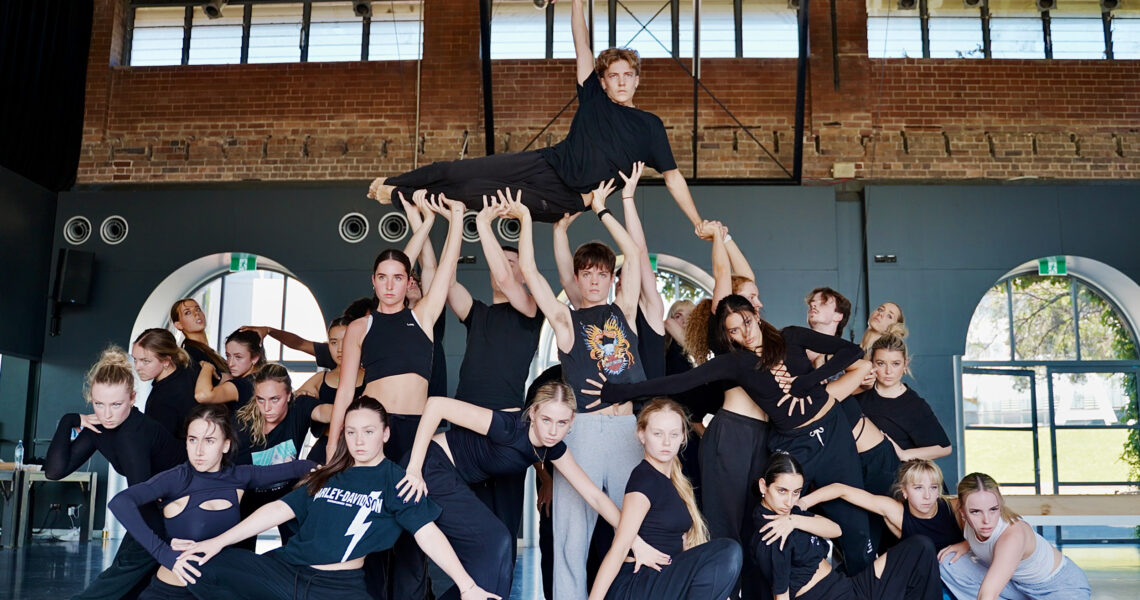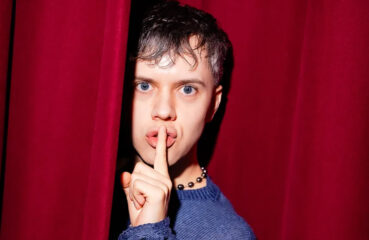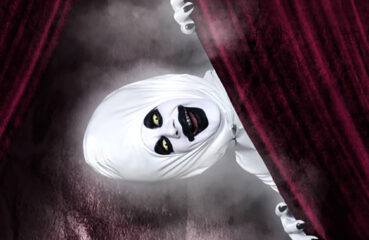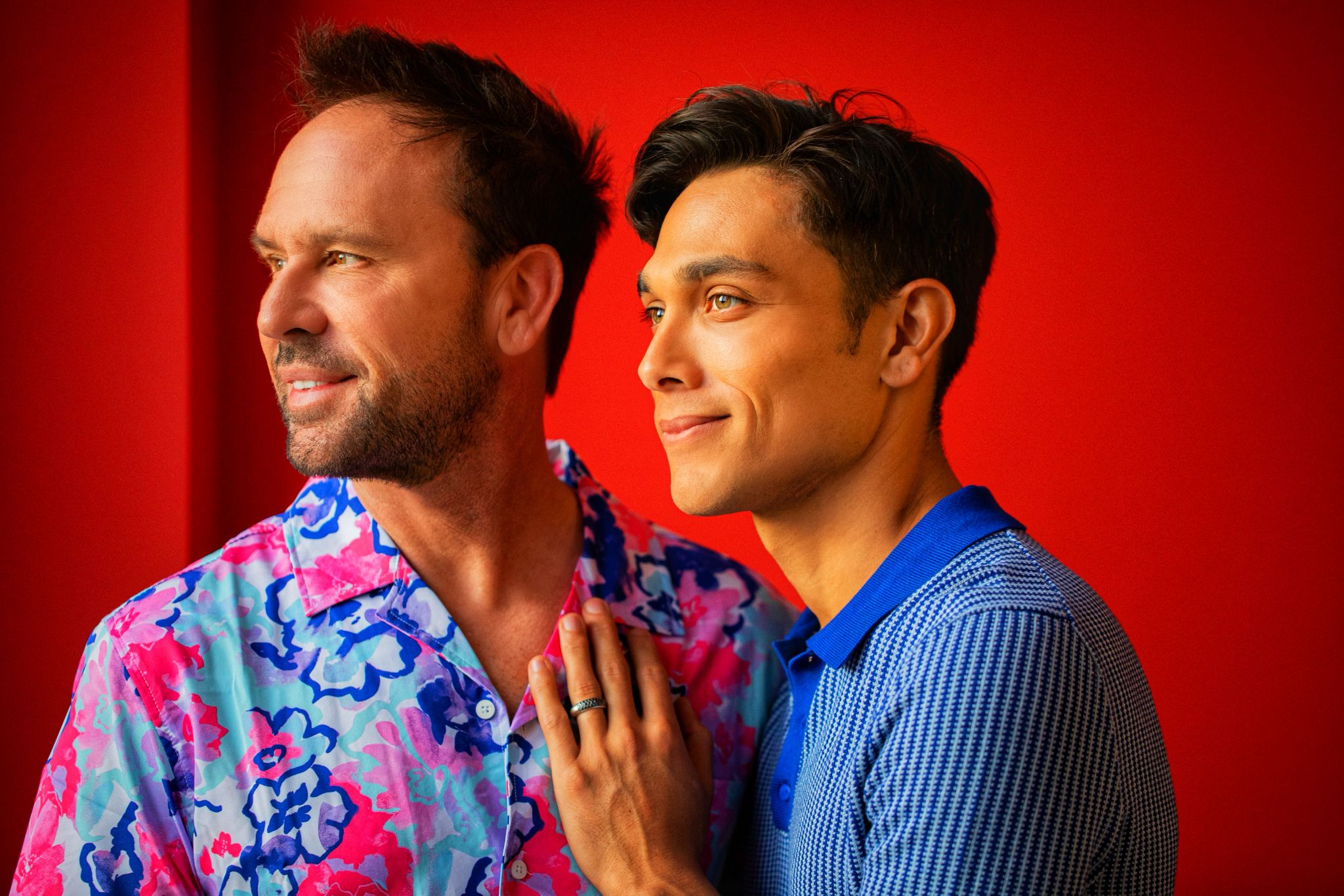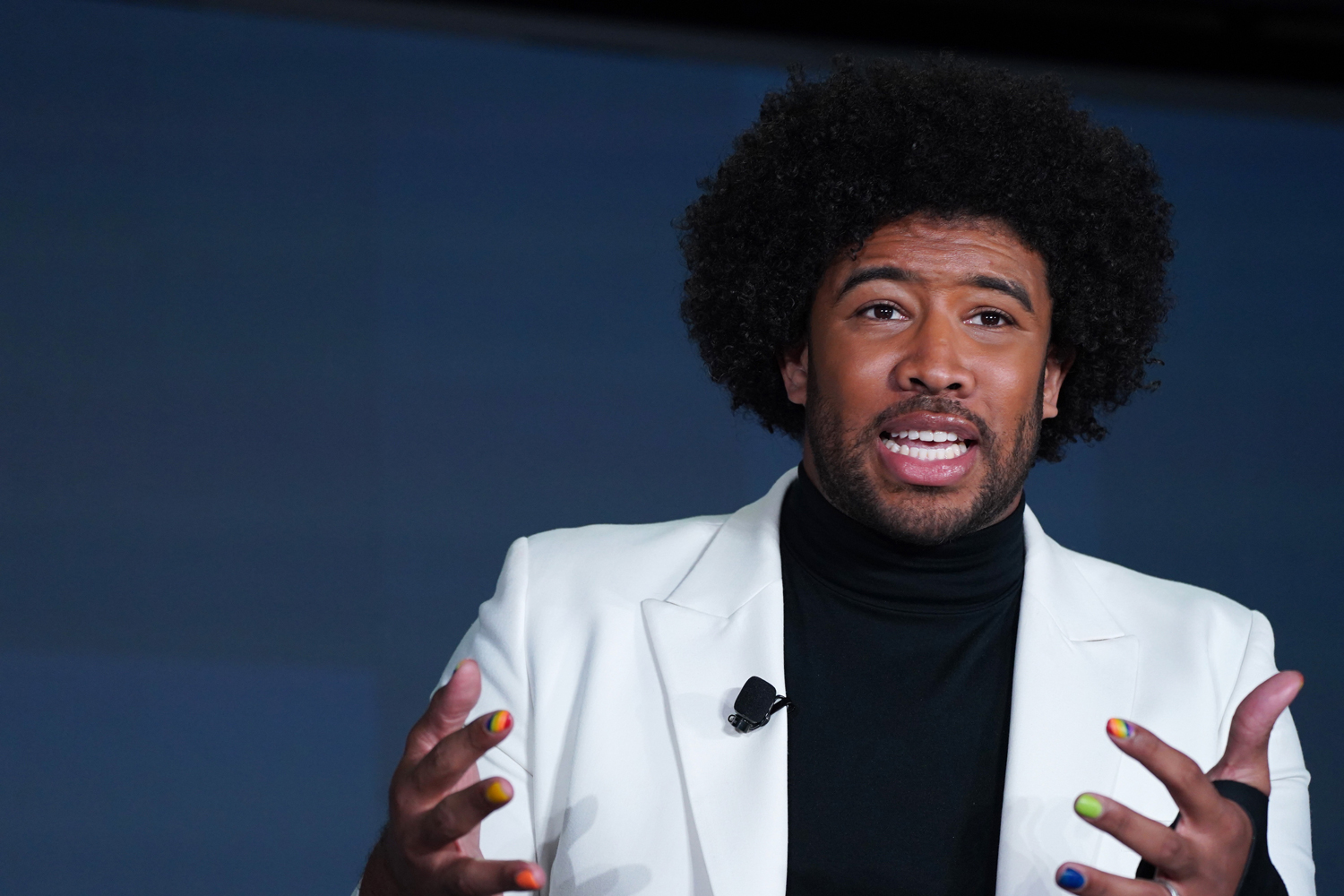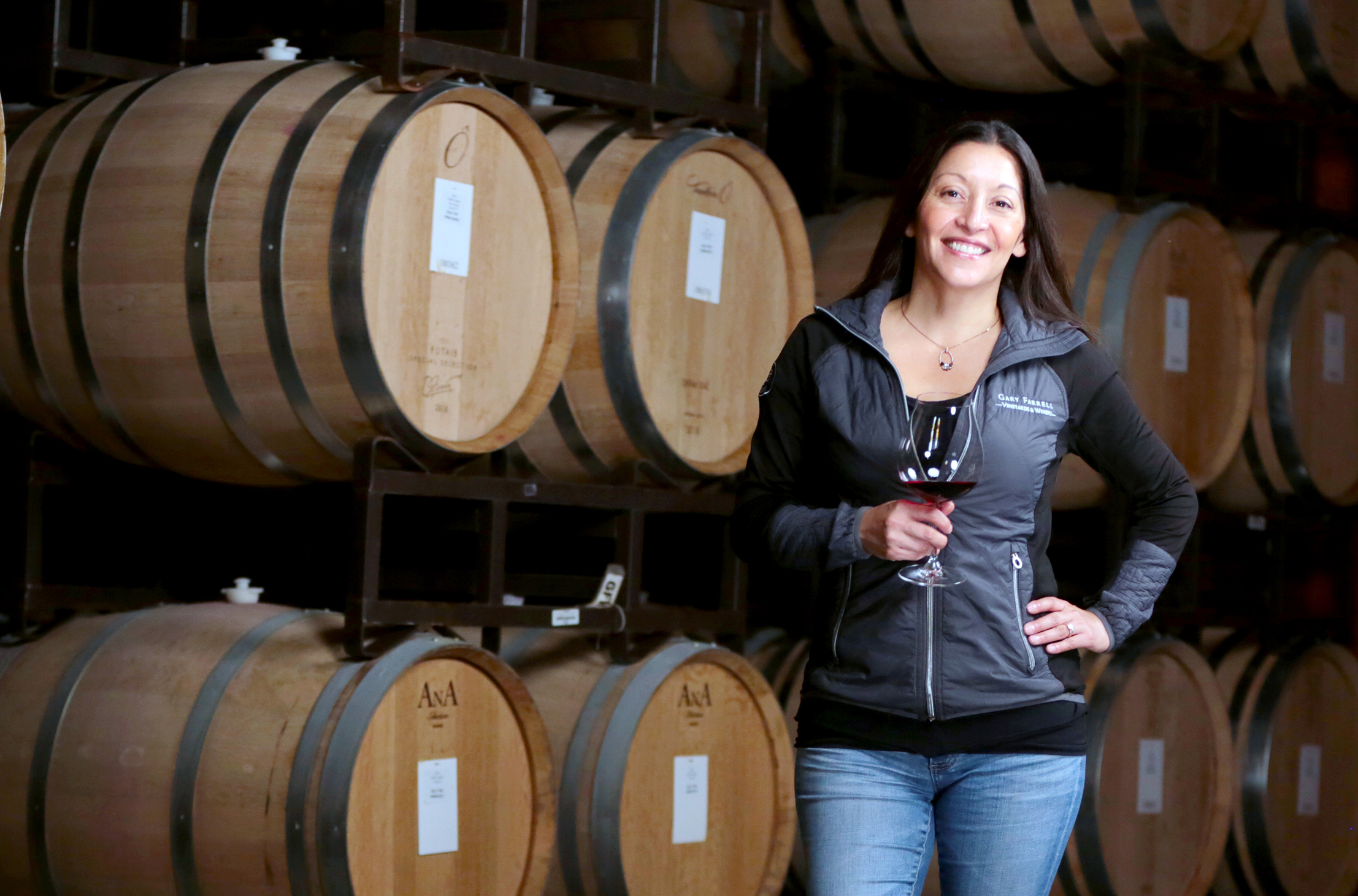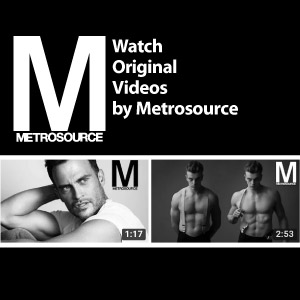There’s a new reality show on the scene that skillfully escapes the shock value and cattiness that have become fundamentals of that genre. An inspiring breath of fresh air, Amazon Prime’s Dance Life mixes documentary and reality TV to present the lives of a handful of dance students in their final year (called full time) at Brent Street, the top dance studio in Australia. These dancers, having studied dance from youth, have given up any sense of a normal life to live and breathe dance. These students are not just getting through their final year, but they are gearing up for perhaps the most important moment of their career, a bigger-than-life Grad performance that can mean being booked in the real world by a variety of agents. The chilling truth? Only 1% actually make it in the dance industry.
Written and directed by filmmaker Luke Cornish, the show not only details the students’ class life, but follows them on an in-depth look at their personal life, the mental, physical, and emotional struggles in the world of dance, and how much they have sacrificed to get to this point. This five-part series is intense and instantly captivating, whether you are a fan of dance or not. To see these youth, so mature for their age, fighting for their passion is intoxicating. To follow them on their journey to the climactic finale Grad performance, which could literally make or break their future in dance, is heartbreaking, emotional, and totally uplifting. There is a message here that is not limited to the dance life – how far are you willing to go to live your truth? Instead of seeing these students pitted against each other in normal reality TV fare, we see them band together in support and strength to get through Brent Street together. It warms the heart.
With over 10 years of experience in TV in Australia and the UK and with a string of industry accolades for his previous projects, Luke Cornish is one of the most sought-after shooter/directors in Sydney. A proud member of the LGBTQ community, he has brought his queer sensibility and eye to the project, knowing what it feels like to be part of a community, yet feel alone at the same time. The dance life can be very isolating.
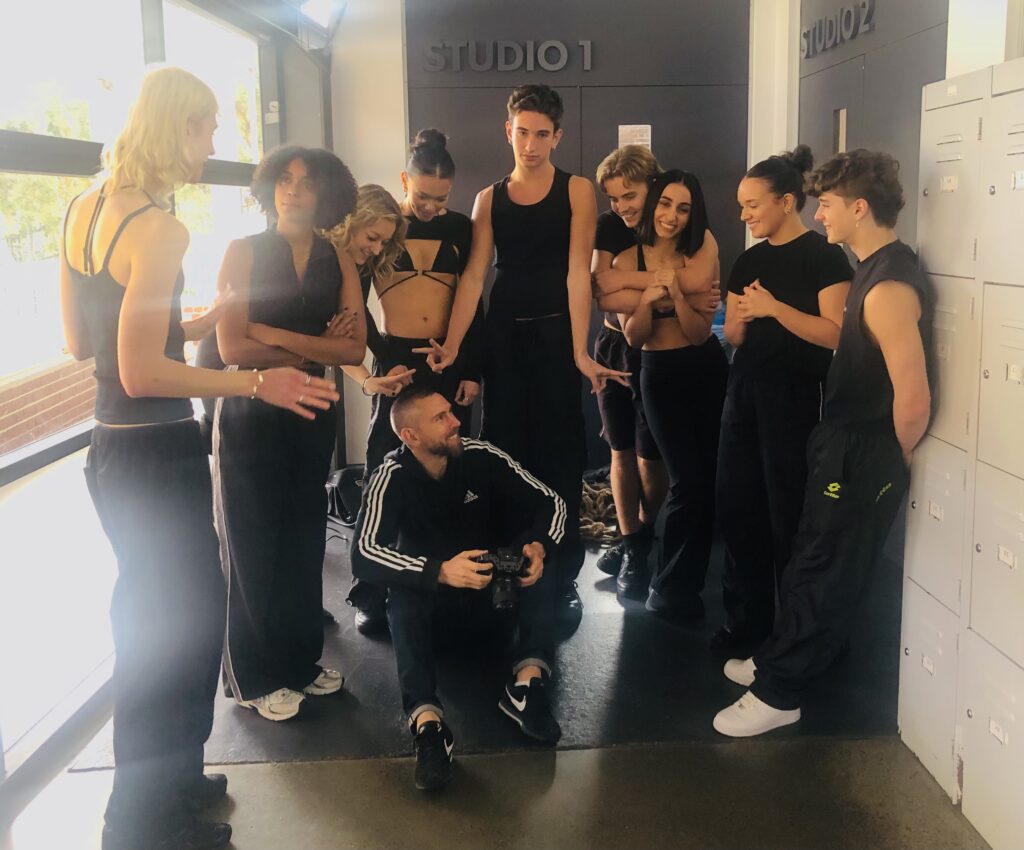
What about the world of dance appeals to you most?
It’s so rare to discover a world where so many different types of people are all fighting for the same dream, you just don’t see that very often as a documentary maker. The world of dance is full of the most determined people and they’re working in an industry where so few make it – those are some seriously compelling stakes for me to watch unfold! I also knew that the constant pressure the dancers are under would give me plenty of storylines to explore. Ultimately, I wanted to see how someone’s character, their past, their personality, all the things that made them them, would impact their ability to succeed.
What factors or points of view were most important to you in putting the show together?
The thing that runs through the entire series for me is: the need to be seen. That became the focus after we heard so many of the dancers say it in their interviews. It’s clearly very important in dance to stand out and literally be seen by an agent, a choreographer, or an audience but it’s also something non-dancers need as well. We all want to be seen by our friends, families, and partners. Ultimately we want our authentic selves to be seen and accepted. Using that as our theme allowed us to bring the dance journey and the human journey together and tell those parallel stories alongside each other. I think you’ll see in this series that what happens on the dance floor is just as important as what happens off it.
You gained very intimate and special access to the students, choreographers, and school. What affected you most, that you were not expecting, from the filming process?
We had SO many unexpected moments while filming, I spent an entire year filming with the dancers, which was such a privilege. In that year we saw people fall in love and fall out of it, I had phone calls at 5am telling me one of our subjects had broken their ankle. The students are 17-19 years old. That’s such a delicate time in our lives, where we’re still discovering who we are. That meant Dance Life turned into a true coming-of-age story. They didn’t start and end the year as the same people.
What were your biggest challenges – personally and director-wise – in getting this project filmed?
This answer is connected to what I love about the world of dance and what inspired me to make Dance Life. The dedication every dancer showed to their craft, despite the odds, is something I can relate to. I literally broke my pelvis in the middle of the shoot but despite being on crutches and barely able to walk I turned up to shoot because one of our subjects was having her boot removed after breaking an ankle. It didn’t help she lived on the 5th floor with NO ELEVATOR. So, yes, I did slide up the stairs on my butt one step at a time. And yes, we did get the shot.
What do you want audiences to get the most from watching the show? What is the mission of the show?
The show is a love letter to people who are in pursuit of their dreams despite there being no guarantee of them coming true. I want people to watch these young athletes become artists and feel confident enough to chase their own goals. People often struggle to ask for what they want in life but this is a story that shows you what’s possible when you do!
As a queer artist, what is your take on the representation of the LGBTQ culture in dance? It is assumed that most male dancers are gay, which is not always the case. We don’t see much mention of lesbian representation in dance. And we saw the journey Archer, a trans student, took in getting to represent her true self on the stage. Is there a struggle for representation in mainstream dance?
I think commercial dance is a progressive place and a lot further along than many industries, but that doesn’t mean it’s fixed. Archer mentioned her struggle to find a place in the industry in her very first interview and I knew instantly that I wanted to follow her on that journey, to discover where she belonged. Representation is so important to me, but I try not to turn people into labels. If their specific identity is relevant to their story, I’ll talk about it but I’m always looking to show that isn’t all they are.
We also get to see the struggles and lives of the dance teachers. Why is that so important to highlight as well?
The teachers are such compelling characters it was impossible not to feature them. They’ve made it through an extremely tough industry, often dancing since they were 2 or 3 years old. They’ve been through fierce training, injuries, and rejection and are still standing. Cassie Bartho is the main teacher we follow in the series. The students adore her. From the very first class I filmed with her I knew we had a show!
What are you most thankful to Dance Life for?
I’m most grateful for the subjects in Dance Life. They trusted us and shared so many intimate moments on camera. That’s no easy thing and was fuel for the team and me when we needed to go the extra mile and work the extra hours to ensure the show was worthy of all they had given.
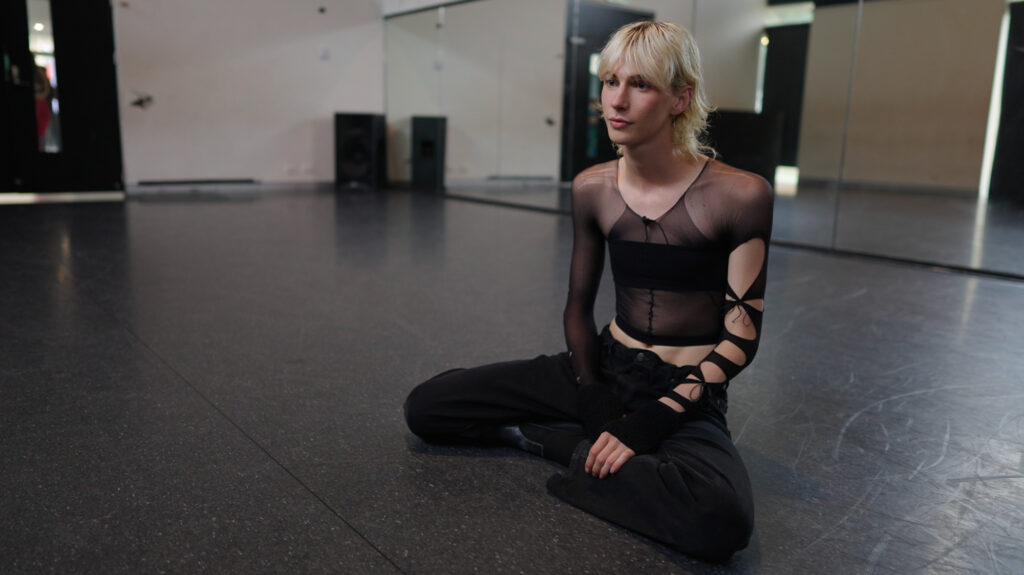 Archer’s story in the series is that of both personal growth and growth as a dancer. At the start of the series, Archer identified as non-binary. While the queer community has a strong presence in the world of dance, how gender roles present on stage is a different story. Not always clear where Archer fits in, her confidence would affect her dance work. A touching moment occurs after Archer is encouraged and allowed to wear the female dancer costume for the final Grad performance, and Arabella, a fellow student, helps her into her outfit. Archer emerges as a confident spirit and nails the performance. Since the taping of the show, she has embraced her transgender identity.
Archer’s story in the series is that of both personal growth and growth as a dancer. At the start of the series, Archer identified as non-binary. While the queer community has a strong presence in the world of dance, how gender roles present on stage is a different story. Not always clear where Archer fits in, her confidence would affect her dance work. A touching moment occurs after Archer is encouraged and allowed to wear the female dancer costume for the final Grad performance, and Arabella, a fellow student, helps her into her outfit. Archer emerges as a confident spirit and nails the performance. Since the taping of the show, she has embraced her transgender identity.
Not only did we get to see your dance journey, but we also got to see your personal identity journey. Were you nervous about letting the cameras into your life in such an intimate way?
Yes! During the filming of the show, I had become quite nervous. I remember being very anxious about how I would come across on camera. I would constantly send producers lists of things I didn’t want included. Looking back, I don’t think I had anything to really worry about!
How did you change the most from going through your final year at Brent?
That was the year I started working as a model but also as a dancer getting gigs outside of a full-time space. I think that, plus the training, opened my eyes to the vast possibilities in these industries. I decided to forge my own path, not the one I had been told was right.
How has being a queer performer added the most to your dance artistry?
I am a deeply creative and explorative artist – in my dancing and my creative work. My queerness and transness are woven into me and therefore my art as well. It’s not a conscious thing but rather an element of the identity I perform with.
Part of being a dancer and being part of the queer community is dealing with body issues, both commercially and personally. How have you worked through body issues to focus on dance?
I don’t think many of my friends other than me have recovered completely from what growing up as a dancer or even just a girl does to your self-image. I have learned that comparison is the killer. Especially when I’m in a room of gorgeous cis dancers and ESPECIALLY cis women. My body is beautiful alone and in of itself … obviously.
What is your take on the current state of representation of non-binary and trans culture in mainstream dance?
I think after leaving full time is when I began to really question the integrity of the commercial industry. That space is often not made from a love of art, movement, and trained technical foundations but sometimes, a sum of stolen parts constructed for the sake of profit, whatever that may mean. I think that trans and non-binary people have created the most beautiful spaces to dance in. I have yet to see that represented in mainstream dance in an important or consistent way.
What did it feel like to take the stage in your final performance in a costume that best fit your identity?
Honestly, at the time I was still struggling with the idea of ‘identity.’ But I’d say it was just fun! Fun to be on stage and still dance like no one is watching. Dancing the way I always do but being seen in the way I wanted finally.
What are your biggest challenges being a queer dancer in the mainstream industry?
I feel like I’m always trying to navigate an uncharted path. I go through highs but then extended lows of little to no work and it can be incredibly challenging. The hardest part is being characterized by the industry as ‘nice.’ Personally, I do have my own specific vibe but as a model and a dancer – I can do the work! It’s just the boxes other people put me into that annoy me a bit.
What are you most thankful to Dance Life for?
I’m just proud to get through it. At 18 and 19 years old I was so confused within my own head, and I am so grateful that this, regardless of everything, came out of that.
What is your message to other dancers going through their queer, self-discovery journey?
I think that any young people dancing who are queer should explore and have fun with themselves and their art. Everything is changing and that won’t stop so try to enjoy what you have right now. Be patient with yourself and your work and stay true to the person you know you are.
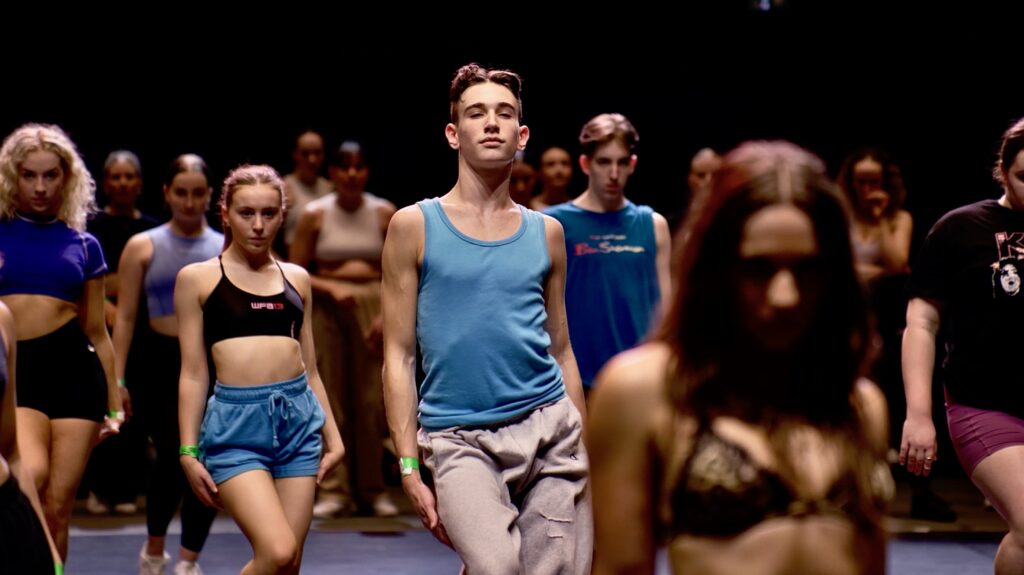 Max Simmons, affectionally nicknamed Max S, is the longest-studying dancer at Brent Street, leaving mainstream education at the age of 14. For him, there is no plan B. Dance is his life. He does not shy away from being outspoken and flamboyant, but rather, uses it in his dance. Even with his many years at the school, he has to deal with the fierce competition with some of the other male students who take the spotlight.
Max Simmons, affectionally nicknamed Max S, is the longest-studying dancer at Brent Street, leaving mainstream education at the age of 14. For him, there is no plan B. Dance is his life. He does not shy away from being outspoken and flamboyant, but rather, uses it in his dance. Even with his many years at the school, he has to deal with the fierce competition with some of the other male students who take the spotlight.
How difficult was it to add cameras around cataloging your final year at Brent Street? Did that increase the pressure? Did it change the way you danced?
To be honest, I was very skeptical and nervous about being filmed. At first, I was running away from the cameras, we hadn’t built relationships and connections with the production crew who were filming us. Once I got to know the director Luke Cornish and producer Jade Barnes better, I felt like that’s when the nerves of the cameras around us started to ease as we built a relationship of trust and understanding with the people filming us.
I wouldn’t say the cameras increased pressure on myself or changed the way I danced, I would have worked hard and danced my ass off regardless of a camera in my face or not. If anything, it could have changed the way I spoke or interacted with people. The first few weeks of being filmed, I found it hard to fully be myself and be comfortable with saying whatever I wanted as I was guarded and nervous but as the year progressed, I felt more comfortable and was able to be myself.
What did you want audiences to see most about your journey?
I wanted audiences to see the hard work and determination I put behind my craft and the love I have for dancing and performing. Dance is truly such a difficult career to pursue and I think the show shed light on this and invited a new understanding of the effort that dancers have to put in.
You have been at Brent Street since an early age, leaving regular school to study. Do you ever regret that decision?
I absolutely do not regret this decision, if anything it was the best decision I ever made. I had friends at regular school but never really fit in, whenever I was at Brent Street I fit in, it felt like home. Leaving regular school to attend years 10-12 at Brent Street not only allowed me to improve as a performer and dancer but also gave me the confidence to be myself and express my sexuality with no shame.
What did you learn most about yourself this final year at Brent Street?
The difficulty of full-time and the struggles that it entailed really showed me how much I want to have dance and performing as my career. I always knew how much I loved to dance but my final year reinforced this.
What are the biggest challenges you face now, being gone at Brent Street? Did it take time to find your own footing on your own after leaving?
The biggest challenge I faced leaving Brent Street would have to be the unknown. For so many years I was used to doing the same routine every day, waking up and training at Brent Street. Sometimes I could feel lost not having this routine. I think also waiting and being patient was a challenging aspect of this change for me, knowing that what’s meant for me will come to me and my hard work will pay off. It did take time for me to find my own footing, but I am someone who whenever I don’t have much on, I will always find something to further my training and career and keep on pushing.
We got to see part of your relationship during the show. Is it possible to maintain a healthy relationship while being a dancer? It seems quite difficult.
I think it’s very possible to maintain a healthy relationship while being a dancer. It can be difficult as you’re in the same industry and trying to reach the same goals, yet I think it’s about being supportive of one another, uplifting each other, and celebrating each other’s wins.
What is your take on the current state of representation of the LGBTQ culture in mainstream dance?
Representation of LGBTQ culture has evolved rapidly in dance. I am no expert but from what I have seen, there are a lot more same sex partnering and storylines about LGBTQ experiences and relationships than there used to be.
How has being a gay man added to your dance artistry?
Growing up in the dance world I found comfort in expressing who I truly was through dance. It allowed me to be my truest self even before I could say I was gay. Whilst my sexuality and my artistry are independent of one another, they are both related to who I am and resultantly do influence each other.
What are you most thankful for Dance Life?
I am so thankful that Dance Life has brought dancing back into the limelight where people can appreciate and admire the craft whilst also being aware of the dedication we dancers have to our artistry. I am also thankful that the show has allowed me and the other cast members to share who we are as people and provide a platform to show our craft.
What is your message to other LGBTQ dancers trying to make it in the business?
I would say to be resilient and never give up, I am a firm believer that hard work always wins. If you know performing and dancing is what you’re meant to do in life, then the obstacles you face along the way shouldn’t matter.
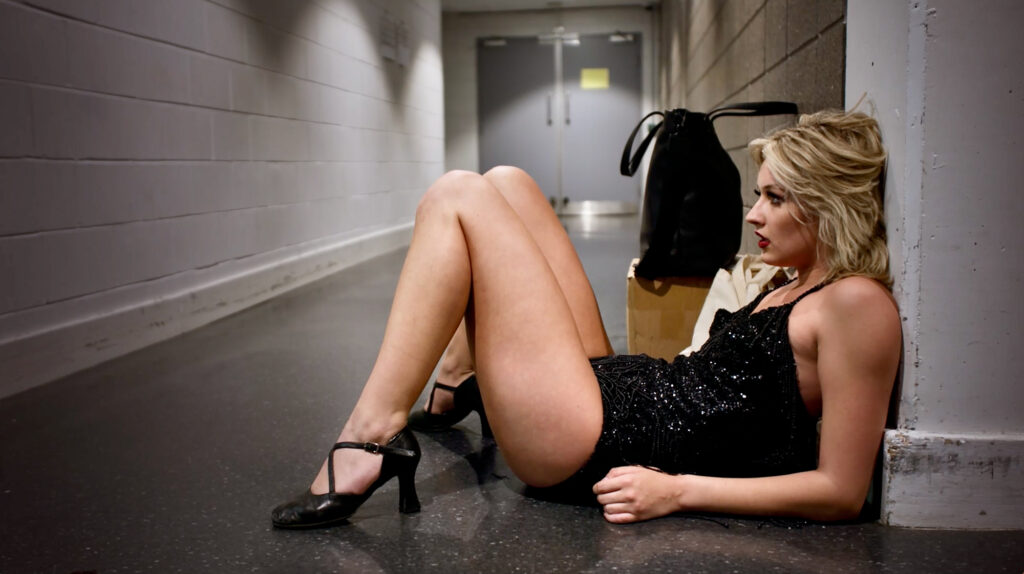 Dancer Arabella believes she is destined for stardom and will do anything it takes to make a name for herself. While at Brent Street, she would take club jobs to earn a living. A triple threat, she was given the opportunity to shine during Graduation, with a showstopping number that would spotlight her skills. The night before her performance, she would get very sick. But, as they say in the business, the show must go on, and she did take that stage. Her sexuality was not showcased in the show, but her queer resilience is evident in her work. She is star quality.
Dancer Arabella believes she is destined for stardom and will do anything it takes to make a name for herself. While at Brent Street, she would take club jobs to earn a living. A triple threat, she was given the opportunity to shine during Graduation, with a showstopping number that would spotlight her skills. The night before her performance, she would get very sick. But, as they say in the business, the show must go on, and she did take that stage. Her sexuality was not showcased in the show, but her queer resilience is evident in her work. She is star quality.
Did you have any trepidation in letting the cameras film your life on such an intimate level?
There was always a level of hesitation with letting the cameras in on my life so personally, a fear of judgment from others and general insecurity, but I knew that in order to create a truthful documentary I had to be open and honest. I also quickly learned that I (quietly) loved the cameras. [Laughs]
What did you want audiences to see most about your journey?
I suppose, in short, I wanted viewers to understand that becoming a professional performer isn’t always a linear process. Each journey is so different from another’s, and there is so much work outside of the full-time course that we have to put in to secure a spot in our industry. Every little thing counts! Every opportunity is just as important as the rest. The full-time course is like a practice run of what our lives will look like for the rest of our careers.
What did you learn about yourself the most from your final year at Brent Street?
That last year of Brent Street really brought me out of myself. Looking back, I started off as a totally different person to who I am now! I’m really proud of how well I coped, and I learned that I’m really good at balancing out my life and coping with a rigorous schedule, but that could all just be because of my Libra sun sign.
What is the reality of dance life after leaving school?
The reality is a pretty humbling experience! You no longer have your schedule planned out for you, and you are your own boss – the transition to small fish, big pond. The first six months out I was all over the shop. I was still working three “muggle” jobs aka waitressing, children’s entertainment, retail, all whilst trying to put my name on the map. Being in my second year out of Brent Street, I feel like I have more rhythm now. Every single day is different and so busy but I’m so grateful that I get to be busy, it’s a privilege to be busy as a performer.
You had a lot of pressure by being the star of one of the final pieces – triple threat! You had some health issues that plagued your final year. How are you maintaining your mental health while dealing with the spotlight and body health?
Great question! I think this is something so important to prioritize as a performer as our toolkit is our physical body and mind. I think I’m still trying to figure this out myself. I realized the tummy bug the night before Grad was because I was run down, and not properly looking after myself with good meals and good sleep so my immune system was very fragile. I try to keep a healthy lifestyle now full of good foods, exercise, and REST. Rest and downtime are the keys to recovery and revitalization. Mental resilience and mental health are so important in this career too, I see a regular psychologist who has been such a tremendous help. I’m learning that separating my work life and personal life is so important so in my downtime I love being around family, friends, and the ocean.
Your sexuality wasn’t highlighted in the show like some of the other cast members. Does your sexuality play a part in your dance artistry?
I think it does, subconsciously. I came out as gay in April of the full-time course and had a hard time coming to terms with it, to be honest. Most, if not all, partnering work is male/female and I don’t think I truly connect with that as an artist because it’s not how I feel. Of course, I can pretend and perform hetero partnering and dancing – I pretended to be straight for 18 years! But since full-time I’ve had the opportunity to dance with women and I feel like the performance comes so naturally there, and I feel comfortable. I hope our industry can create more opportunities and room for gay/queer stories to be told.
What is the current state of lesbian representation in mainstream dance? Have you ever been discriminated against because of your sexuality?
Lesbian representation almost doesn’t exist in mainstream dance. Of course, hetero representation is the foundation of our industry and over time gay representation has become more common thankfully. Unfortunately, I have yet to see a performance curated around or about lesbians and queer women. I’ve never been personally discriminated against for my sexuality, I’m not sure many people in the Australian scene even know I’m gay! Maybe I haven’t been loud about it because there is no room for lesbian roles at the moment, maybe it’s because our community isn’t as accepting of lesbians as they are gay men, especially in a female-dominated industry. But I feel separated from the community in the sense that I don’t have the opportunity to perform as a queer woman in a queer role. I do have plans and ideas to create that work for myself and others.
We got to see some of the realities of earning money while working as a dancer. Is there a stigma against dancers who take club gigs?
There is SUCH a stigma with podium/club work. Most of that comes from the general public. My friend Poppy Derrington, who was working with me the night Dance Life filmed in the club, had an experience one night with some girls standing underneath her podium, where they pointed and laughed at her saying things like, “imagine being a dancer” and “she has no self-respect.” It’s such a degrading thing to hear whilst you’re working, dancing your guts out for these people! But it’s such a good job to take when you are fresh in the industry as it teaches you basic skills about how to work gigs, bump in and out, how to prepare, to be adaptable, and to get some experience.
What are you most thankful to Dance Life for?
I’m so grateful for the opportunities Dance Life has given me, it’s been so life-changing to be a part of this whole process. But I’m most thankful for the way this show has brought dance back into the spotlight in the media and for the general public. Society and the general public are really starting to tune into the dance world again with things such as the UDA National Competition, music videos like “Jungle,” “Back on 74,” Superbowl performances, and now our Dance Life series. I hope the love and appreciation for our craft keep growing! It creates work and opportunities for us performers, which is positive.
What do you want most from your dance career?
I don’t care what jobs I do, where I work, where I am, I just want to leave this earth knowing I’ve entertained. I want to tell stories with performance, and I want to provoke thoughts and emotions when I perform. My career is artistic and acts as an escape for audiences. I want to work on screen and on stage, but as long as I’m performing and entertaining and making people feel things when they watch me, I’ll be a happy girl.
What is your message to other LGBTQ dancers trying to make it in the business?
Don’t ever hide or dull your sparkle. Your differences are actually your strengths and it’s this that will be your magical power. Our community is on a great trajectory where we are starting to see more and more representation in the workplace and there is and will always be room for you here. Everyone has a spot in the industry, even when at times it looks like there’s not one. It’s just up to you and you alone to find that spot and be committed to finding it. It can feel like a needle in a haystack, but when the time is right the universe will put it in front of you. Just don’t give up, passion will always triumph.
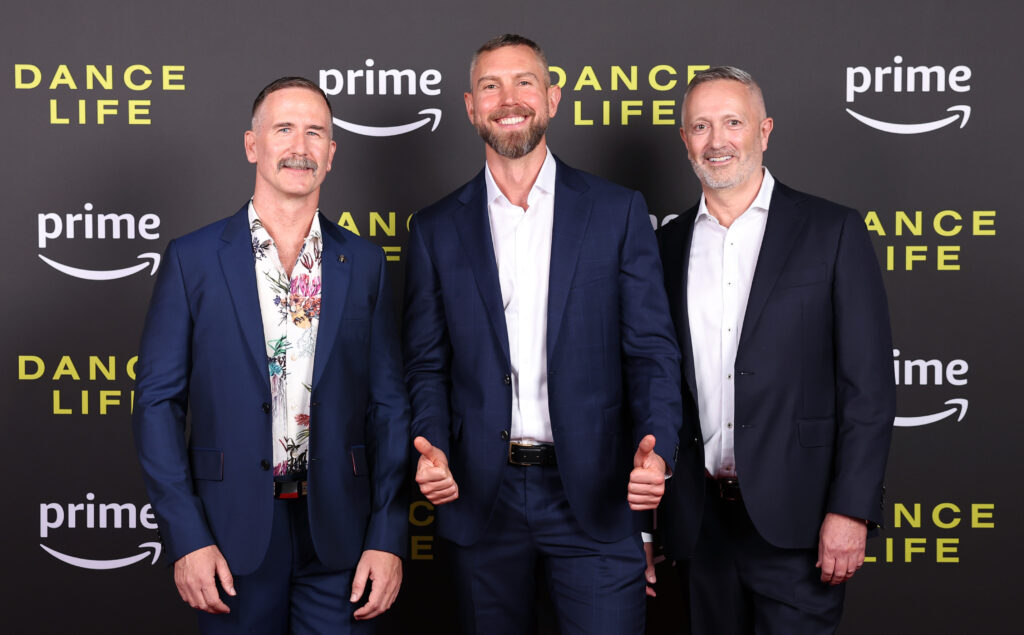
(Photo L-R: associate producer Michael Sean Walters, director Luke Cornish, and producer Philip Busfield at the Dance Life launch)
From what the students who filmed the series have reported, at the heart of the show was the creative team and crew behind the series. Spending time with the Dance Life was like being part of a family. Earning their trust, the team was literally with them during the highs and lows of their experience. One of the show’s associate producers, Michael Sean Walters, has been instrumental in getting the word out in the States about the show.
What was the inspiration for getting this show made?
Jade Barnes, one of the executive producers, worked with director Luke Cornish to create the show. The idea initially was to show behind the scenes of a dance academy and how talented students handled the pressure of a final make-or-break year to become professional dancers. Many students at the young ages of 18 – 19 have already been dancing for 15 years. I want to put that in perspective: your whole life and your whole career in the 18+ years you’ve been on the planet, the thing you’ve dedicated your life to, often to the exclusion of other childhood experiences, to be good enough to get into the Brent Street course in the first place, now gets decided in this year. The comparison to other dancers and how hard you’re prepared to work to be seen and to improve in this final leg of a lifelong marathon is revealed.
What do you think the message of Dance Life is?
Commit. But also, enjoy the ride. There are obviously coming-of-age elements to the series, but I know from our broad audience to date that everyone appreciates the efforts and energy reflected on screen. We all want to live in a world where hard work is rewarded. And we applaud when it is.
As a series, I will add, that it has no brats, bitchiness, or backstabbing. This in itself, sets the series apart and has been regularly commented on. We are proof positive that you can make a show that includes characters supportive of each other – despite being competitors! That drama doesn’t have to be manufactured to be engaging and heart-wrenching. I’m tired of living in a Jerry Springer world of cutthroat reality shows that tear down rather than elevate.
What were the biggest obstacles in getting the project done?
We were a small crew, so there was constant concern about not having enough cameras to be everywhere at once. And in that worst-case scenario, we would miss something! I live close to the school, and there were a number of times I would get a call to drop everything, and I’d have to race to Brent Street because something had happened or was about to happen and we’d want to be on hand to film.
Also, because we’re not a scripted show, as a producer there was always an underlying anxiety that something wouldn’t happen, that everything would be smooth sailing but of course, that didn’t happen. Life is a rollercoaster, consistently tossing us curve balls – we just had to be on hand to film them when they happened!
Having filmed the show, what impressed you most about these students?
Their tenacity. There were 90 students in the course. As you see from the beginning of Episode One, they are told upfront, “Not all of you will make it.” Throughout the year not everyone was placed center stage or given solos and yet these students showed up every day, faced competition every day, the potential for injury every day, and committed fully whether they were upfront or down the back to do something they loved. They knew that every day they got to dance was a gift. This became particularly poignant the closer we got to Grad, with the students acknowledging that their opportunities to dance thereafter would be limited to employment opportunities.
What were the most important factors that the team wanted to focus on in putting the show together?
Character. Trust was integral. Getting to know our characters, investing in them, having them open up to us, meeting their families, etc. Allowing themselves to be vulnerable in front of us with a camera rolling. Without that, the audience isn’t invested. It’s amazing to have a real-time reaction, yes, I cried! At times I knew something was going to make the final cut because it hit you right in the heart and if it’s done that to you, it’s going to do that to the audience.
And dance. We also knew the dancing was going to be amazing. It’s an elite dance school after all! But between executive producer Jade Barnes, who knows dance and would ensure a standard for those of us less in the know, and director Luke Cornish who managed to make music video edits out of all the impressive dancing – we know, that we have fulfilled the adage: Leave them wanting more!
As a gay man, what do you think of the state of LGBTQ representation in mainstream dance?
Men in high heels in dance videos, Swan Lake performed by a male dance troupe, contemporary pieces of two male lovers intertwined – the lines are being blurred and I guess that’s a good thing. But, it feels like it’s meant to shock. I’m not sure I’m qualified to answer this question. In short, I’d say this: Greater representation leads to greater exposure and despite bumps in the road I can only think that that leads to greater understanding, greater acceptance, and integration.
Dance Life is now streaming on Amazon Prime.
Last modified: April 4, 2024

